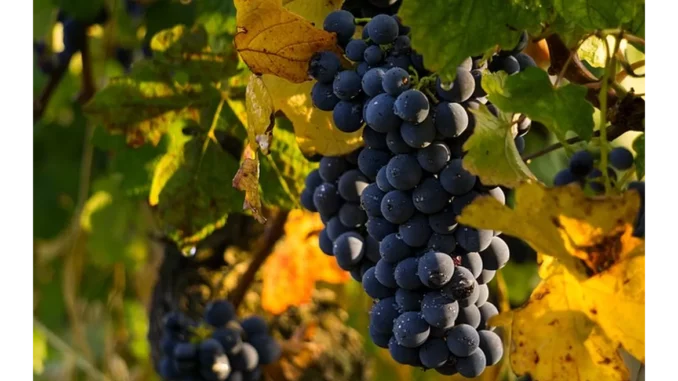
The Best Investment Wines: A Sophisticated Guide to Fine Wine Collecting
Investing in fine wine stands as a refined alternative to traditional asset classes, offering not only potential financial gains but also the pleasure of owning some of the world’s most exquisite bottles. The fine wine market, though a small segment of the global wine industry, presents compelling opportunities for appreciation and portfolio diversification. This article delves into the premier regions for investment wines, top-performing wine brands, and essential considerations for building a fine wine portfolio.
The Allure of Wine Investment
Wine investment captivates for several reasons. Fine wines tend to appreciate in value as they age, presenting the possibility of substantial returns. Historically, investment-grade wines have delivered an annual return of 10.6% over the past 15 years. Moreover, wine investments exhibit low correlation with traditional financial markets, offering a hedge against economic fluctuations. For instance, the Liv-ex 100 index, which monitors the prices of the most sought-after wines, surged by 23% in 2021, surpassing many stock indices.
Premier Regions for Investment-Grade Wines
While Bordeaux and Burgundy have long been the stalwarts of the fine wine investment market, other regions are emerging as notable contenders. Here’s a closer examination of these key regions:
Bordeaux: The Epitome of Excellence
Bordeaux remains synonymous with fine wine investment, particularly its First-growth red blends. These wines are celebrated for their superior quality and aging potential, ensuring consistent demand. The Left Bank, renowned for its Cabernet Sauvignon-based blends, boasts prestigious labels such as Haut Brion, Latour, and Lafite Rothschild. Meanwhile, the Right Bank, famous for its Merlot blends, features esteemed producers like Petrus, Le Pin, and Lafleur.
Burgundy: The Pinnacle of Rarity
Burgundy’s investment appeal is driven by its limited production. Grand Cru wines from illustrious producers like Domaine de la Romanée-Conti, Leroy, Leflaive, Coche-Dury, and Armand Rousseau are highly coveted. Their scarcity and exceptional quality command astronomical prices at auction.
Rhone Valley: Emerging Opportunities
Although Rhone Valley wines might not command the same high prices as Bordeaux or Burgundy, they offer solid investment potential. Notable wines include Chateau Rayas Chateauneuf-du-Pape and Paul Jaboulet Hermitage La Chapelle.
Champagne: Consistent Performers
Champagne has gained substantial traction in the fine wine investment market, led by iconic brands such as Dom Pérignon, Louis Roederer, and Krug. These wines are known for their steady returns and widespread appeal.
Italy: The Ascendant Star
Italy’s investment wines primarily hail from Tuscany and Piedmont. Super Tuscans like Sassicaia, Ornellaia, and Solaia are highly esteemed, while Nebbiolo-based wines from Piedmont, particularly Barolos from producers like Giacomo Conterno and Giuseppe Mascarello, are increasingly sought after.
New World Wines: American and Australian Prominence
California’s Napa Valley spearheads New World wine investments, with collectible Cabernet Sauvignon wines from producers such as Screaming Eagle and Schrader Cellars. Beyond Napa, Sonoma County’s Vérité Winery and Ridge Vineyards in the Santa Cruz Mountains are notable. Australian producers like Penfolds and Henschke also offer investment-grade wines with reliable appreciation.
Top Wine Brands for Investment
According to the Liv-ex Power 100 Report, the leading wine brands in 2021 included Domaine Leroy, Coche-Dury, and Emmanuel Rouget from Burgundy, as well as G.B. Burlotto from Piedmont and Sine Qua Non from California. These brands have demonstrated robust price performance, making them excellent choices for investment.
Exemplary Investment Wine Bottles
For those seeking to invest, here are ten distinguished wine bottles:
- 2015 Domaine Leroy Richebourg Grand Cru, Côte de Nuits, France: This Pinot Noir has seen a 176% price increase from 2020 to 2022.
- 2014 Coche-Dury Corton-Charlemagne Grand Cru, Côte de Beaune, France: A Chardonnay with a 39% price appreciation.
- 2015 Emmanuel Rouget Cros Parantoux, Vosne-Romanée Premier Cru, France: A Pinot Noir with a 62% price increase.
- 1996 Dom Pérignon P2 Plénitude Brut Rosé, Champagne, France: A Champagne blend with a 76% price rise.
- 2010 Sine Qua Non Stockholm Syndrome Eleven Confession Vineyard Grenache: A Grenache with a 72% appreciation.
- 2018 Château Lafite Rothschild, Pauillac, France: A Bordeaux Red Blend with a 68% price increase.
- 2016 G. B. Burlotto Barolo Monvigliero, Barolo DOCG, Italy: A Nebbiolo with a 373% price surge.
- 2018 Château Margaux, Margaux, France: Another Bordeaux Red Blend with a 45% appreciation.
- 2016 Tenuta San Guido Sassicaia Bolgheri, Tuscany, Italy: A Cabernet Franc and Cabernet Sauvignon blend with a 56% price rise.
- 2009 La Spinetta Vursu Vigneto Valeirano Riserva, Barbaresco DOCG, Italy: A Nebbiolo with a 99% price increase.
Essential Considerations for Wine Investment
Investing in wine necessitates careful consideration of several factors:
- Provenance and Storage: Proper storage is crucial to maintain the wine’s quality and value. Wines should be stored in a temperature-controlled environment with minimal light and vibration.
- Vintage and Producer: The vintage and producer significantly impact a wine’s investment potential. Researching the historical performance of specific vintages and producers can provide valuable insights.
- Market Trends: Staying informed about market trends and emerging regions can help identify new investment opportunities.
Fine wine investment offers a unique and rewarding avenue for portfolio diversification. With discerning selection and meticulous storage, investment-grade wines can yield significant financial returns. Whether you are a seasoned investor or a novice, the realm of fine wine presents a rich landscape for exploration and investment.


Be the first to comment